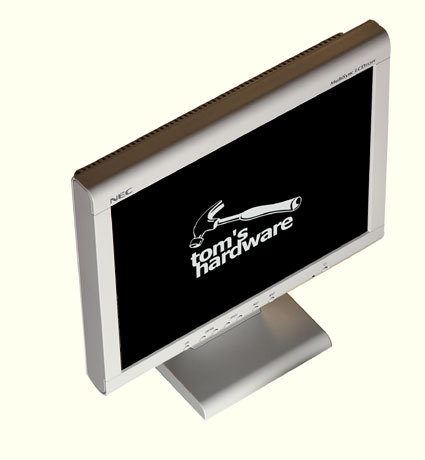Comparison Of 15" LCD Monitors - Part I
NEC MultiSync LCD1550V
NEC's pricing policy is a reflection of how the LCD market evolved in 2001. The previous model, the 1530V, was selling for about $1000 at the end of 2000. Its current replacement, the 1550V, now costs half as much and is technologically far superior to the 1500V. What's more, the panel used in this year's monitor is a cut above the one used in the older model. After all, for the 1530V having been one of the best TFTs available at the beginning of 2001, it was quickly surpassed by other models with faster response times. Internet surfing was crippled, and scrolling through pages caused letters to blur, while rapid mouse movements caused games to be displayed fuzzily.
The 1550V is listed as having a response time of 30 ms. This adds up to a 40% improvement over its predecessor. Even if it is virtually impossible to confirm the difference, we did notice a substantial improvement in response times.
On the other hand, though, the 1550V still struggles to display dark hues properly. They appear as shades of black, as we've often seen. The green subpixels are capable of rendering a wide array of intensities, but the red and blue subpixels really could render more nuances. This is the case even though, theoretically, the contrast ratio has improved 67%, from 200:1 to 300:1. Fiddling about with the brightness doesn't seem to make much of a difference, either. If you modify the setting in the OSD menu, you lose more lighter shades than you gain darker ones.
NEC is a brand focused on the professional market, and the 1550V is a good monitor that would make a more than adequate replacement for a CRT monitor in a complete PC system from the same manufacturer.
Get Tom's Hardware's best news and in-depth reviews, straight to your inbox.
Current page: NEC MultiSync LCD1550V
Prev Page LG 575LM (not Currently Available In All Regions) Next Page Neovo F-15